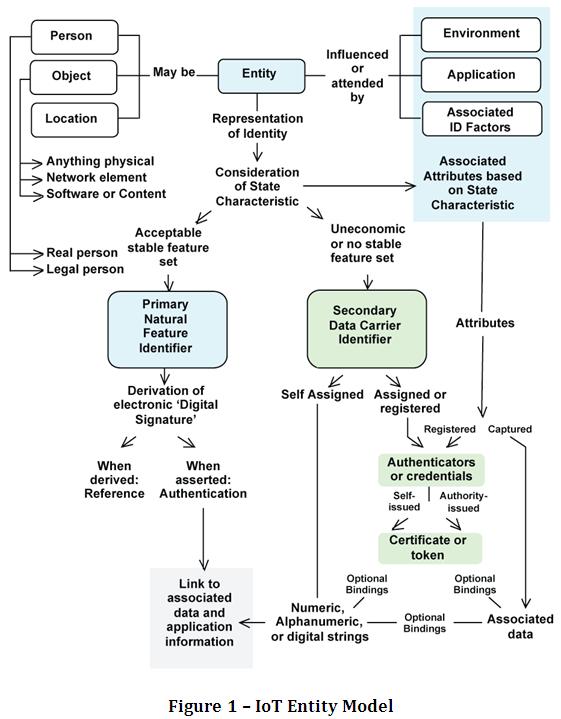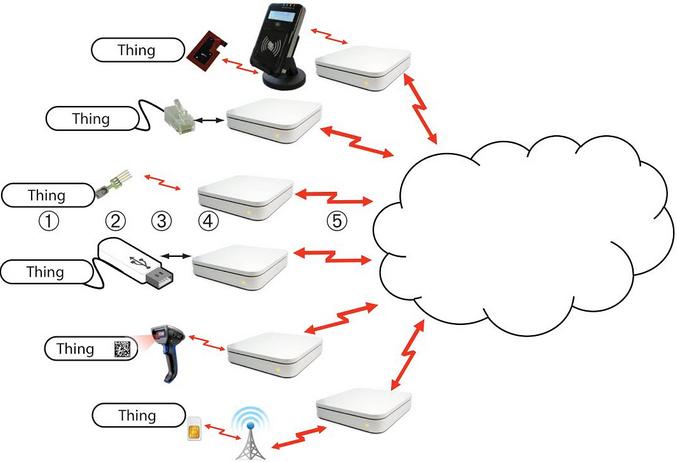The Internet of Things Part 2 - Unique ID
The Internet of Things – Part Two – Unique Identification
I have six honest serving men
They taught me all I knew
Their names are What and Where and When;
and Why and How and Who.
- Rudyard Kipling (1865-1936)
With apologies to the celebrated English poet and author, the supply chain submits that a seventh honest man is missing; whose name is “Which”.
And, as in Macbeth, there are three “Whiches”:
- “Which one”,
- “Which group”,
- “Which container”.
These seven “questions” underpin the very heart of the supply chain, traceability, tracking, and chain of custody.
Table 1 – Transactional identification
|
WHO |
Individual |
Identification of the individual |
|
WHAT |
Product code |
Identification of the product (SKU) |
|
WHICH |
||
|
Item |
Unique item |
Globally unique item serial number |
|
Group |
Specific group |
Identification of the lot or batch |
|
Container |
Package ID |
Globally unique transport unit identifier |
|
WHERE |
Location (Storage/Postal/ Lat Long Alt) |
Unambiguous identification of the location |
|
WHEN |
At what time |
Unambiguous time stamp |
|
HOW |
Method |
Unambiguous identification of the process |
|
WHY |
Authority |
Purchase Order/ Work Order |
On these pages in late October (28 October 2013) we discussed the Fundamentals of the Internet of Things (IoT). In this installment we will drill down further, to potentially the most significant element to IoT . . . unique identification.
The most recent publication of the European Research Cluster on the Internet of Things[1], the most recent Internet of Things – Architecture (IoT-A) deliverable[2], and the most recent CASAGRAS report[3], each identify “unique identification” to be one of the most, if not the most pressing issue requiring global harmonization.

In applications of the Internet of Things (IoT) one thing can communicate with another thing via the Internet. Here a thing is an “entity” as shown in Figure 1, above, where an object communicates to another object or a person, legal or real. For that “entity” to communicate it must possess an identifier of “which” it is.
Ultimately, the various forms of unique identification need to be combined in a single message in an unambiguous form. ISO/IEC 29161 provides unique headers or “tags” enabling this combination in an unambiguous form.
Defining an “entity”
General - defining the “Thing”
Figure 2 shows some of the possible iterations of the Internet of Things (IoT). From top to bottom we have an integrated circuit card being used as an electronic purse and being read by an IC card reader. The next “Thing” is “hardwired” through an RJ-45 connector. The following “Thing” has a wireless sensor attached or embedded, followed by a “Thing” that has a USB interface. Following that we have a wireless handheld two-dimensional symbol reader reading a 2D symbol appearing on a “Thing”. And finally we have a “Thing” equipped with a SIM card, possibly a mobile telephone. Of course there are other possibilities and these iterations of IoT might actually be combined, e.g., a mobile phone reading a 2D symbol, an RF tag, or a wireless IC device.
Which one of many “Things” are we addressing
The wireless sensor in Figure 2 shows several unique identities that may need to be defined. In (1) it may be the actual “item”, while (2) might be the identity of the sensor, (3) might be the communications between the sensor and Network Capable Application Processor (NCAP)/gateway (and it may identify the communications port of the NCAP/gateway), (4) might identify the actual NCAP/gateway, and (5) might be the identification of the resource being sought on the Internet of in the cloud.
A single transaction may require the capture of more than one “Thing”
A single transaction, in fact, may need to capture several identities as it progresses from origin to destination (and return). In the sensor example, above, there exists a need to capture, each time a transaction is recorded, the following:
* Item identification
* Sensor identification
* Node identification
* Gateway identification
* Target resource identification
* Location of data capture, if mobile
* Time of data capture
* Identification of the individual, if with human involvement
Entity as a person
From the perspective of an entity as a person, such a person might be a physical being or might be a legal person. The law distinguishes between a natural and legal person. A natural person is any human being, with legal capacity commencing from the time of birth. A legal (artificial) person is an association of people (e.g. a corporation) or special-purpose fund (e.g. a foundation) that is recognized by law as having legal personality.[4]
Entity as an object
From the perspective of an entity as an object, such an object might be a physical thing, a virtual thing, a network element, software, or software content. As a physical thing, such an entity might be thought of as a product code, a stock keeping unit (SKU), a package housing multiple items, a transport unit assembled to move items between various physical locations, a pallet or container as a unique item, a pallet or container as a unit of multiple packages, or an asset.
A network object is defined as segments of a network that can be reused throughout multiple responses. One can use the network objects to centralize data input so that one only needs to change the network object instead of each instance of the data. Network objects can be given recognizable names; for example, the IP address 192.168.5.34 becomes the Sales Web Server, and the IP range 192.168.5.35 - 192.168.5.45 becomes Atlanta Web Servers.
Entity as a location
From the perspective of an entity as a location, such a location may be defined within a Coordinate Reference System (CRS) used in global positioning systems (GPS), a relative location system used in conventional real time locating systems (RTLS) or a location could simply be assigned, coded, and included in a database for further reference. From this author’s perspective and data stricture to address Latitude / Longitude / Altitude is suggested, since such a designation of location can be ascertained without a database and with equipment that is widely available commercially (GPS).
A structure similar to 41.99895/-91.606062/237 can provide resolution to one meter in all directions.
ISO/IEC 29161 – Unique identification
ISO/IEC 29161 is being developed to serve exactly the needs identified above. There are those who wish to make this encoding based on RFID; others wish it to be based on sensors. While a common data structure, probably an IETF URN, will be required for the interface to the reader, the actual encoding in the device (sensor, RF tag, 2D symbol, mobile device) will need to accommodate the syntax appropriate for that device. Table 2, below, while not reflective of all values in the standard, shows how unique identification can be used across the widest ranges of technology.

Questions on ISO/IEC 21961 and other issues raised in this article may be directed to
[1] IoT: Converging Technologies for Smart Environments and Integrated Ecosystems - Cluster Book 2013 [2013-10-10]
[2] Deliverable D1.5 – Final architectural reference model for the IoT v3.0 [2013-07-15]
[3] CASAGRAS Final Report [2009-11-18]
[4] http://www.eurofound.europa.eu/emire/GERMANY/LEGALPERSON-DE.htm
Written by Craig K. Harmon
Read part 1 - The Internet of Things (IoT) - The Fundamentals
